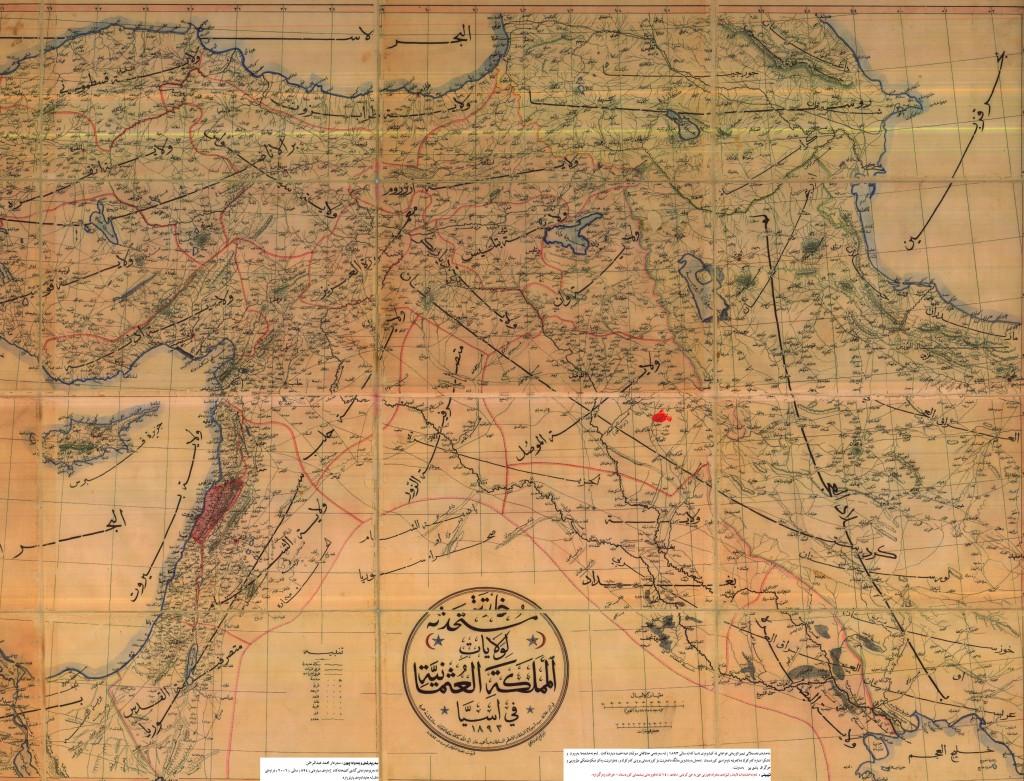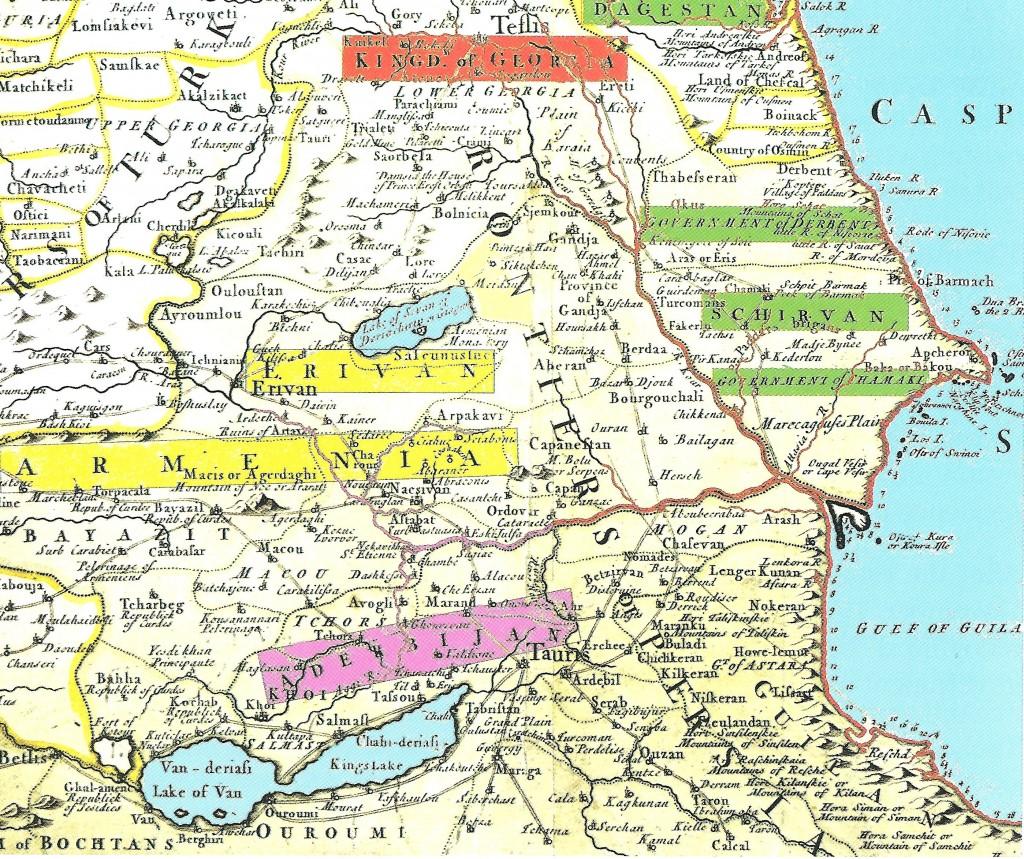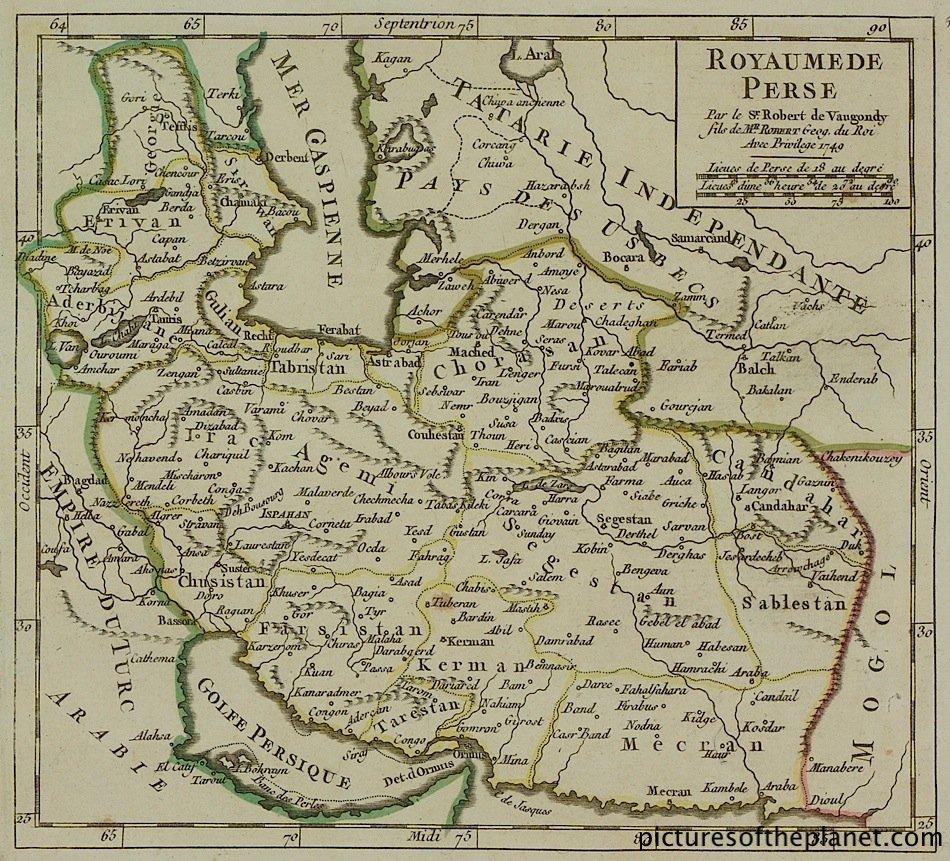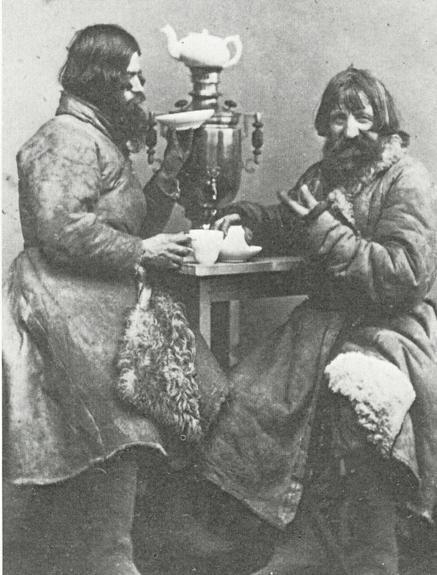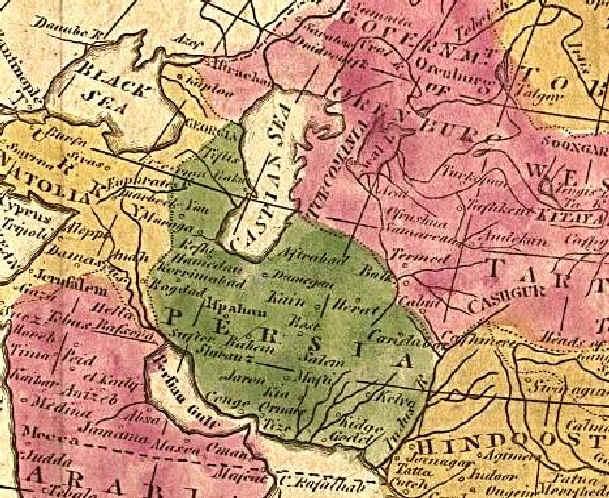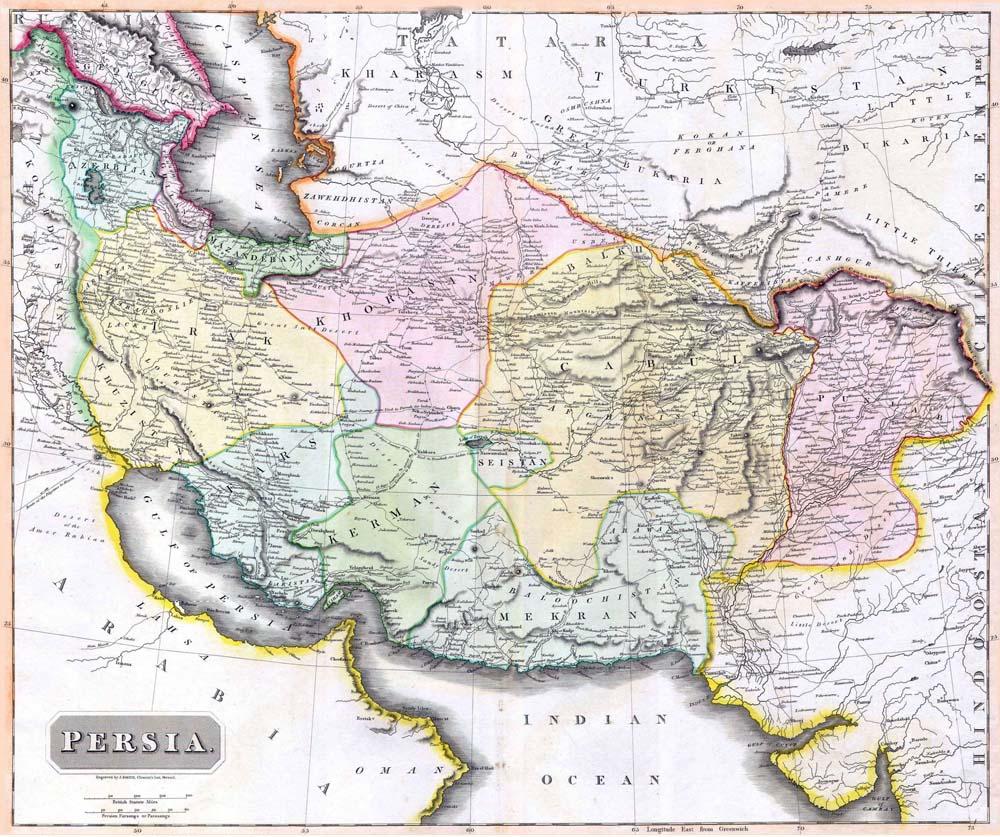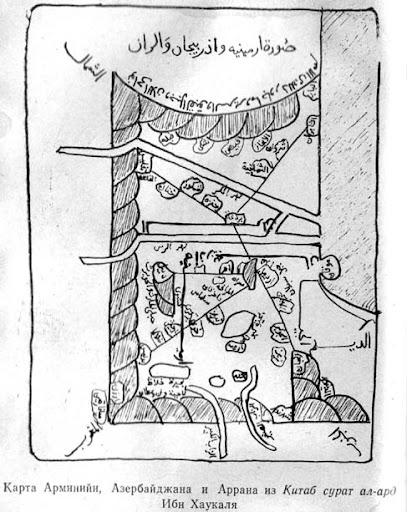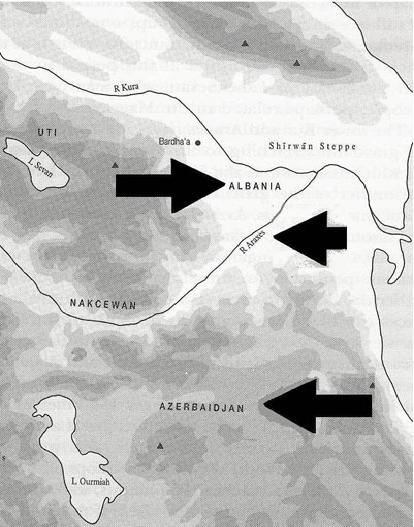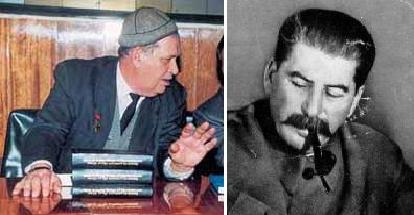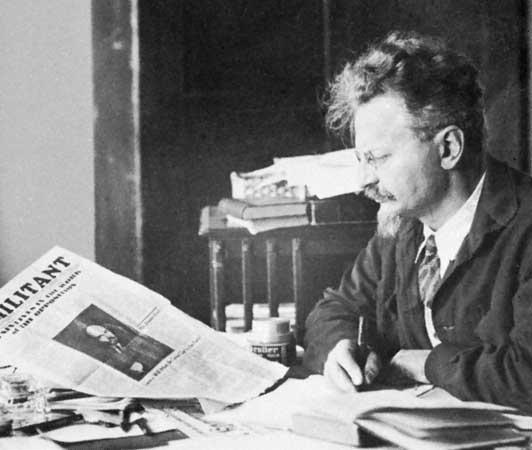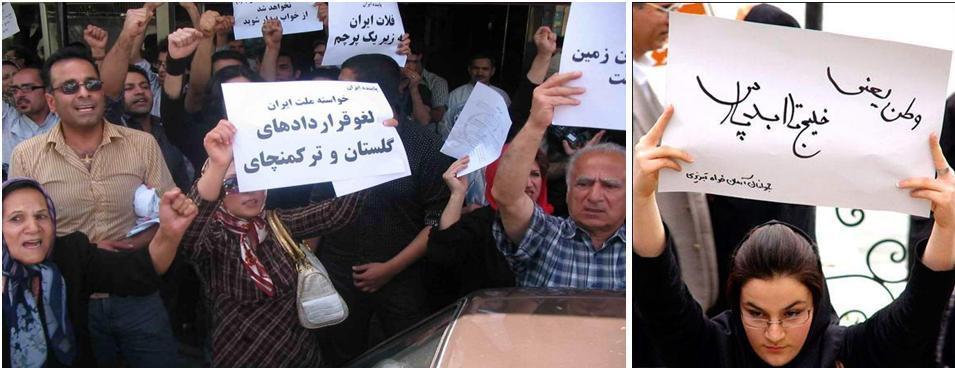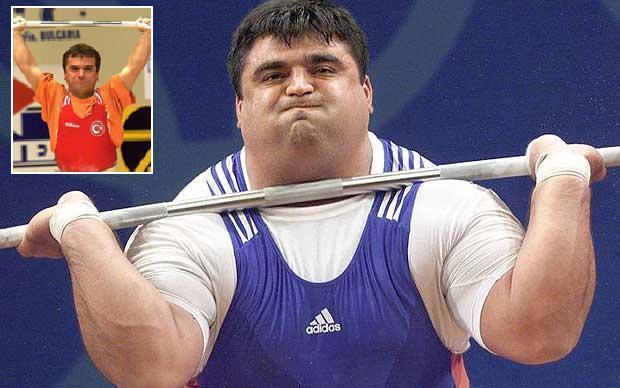Letter to Congressman Dana Rohrabacher Regarding Azarbaijan
To: Congressman Dana Rohrabacher (Chairman-Oversight and Investigations Subcommittee – House Committee on Foreign Affairs)
From : Kaveh Farrokh (PhD)
Regarding: Letter (dated July 26, 2012) to The Honorable Hillary Rodham Clinton (US Secretary of State) (download in pdf)
Date: September 1, 2012
======================================================================
Dear Congressman Rohrabacher,
I am writing this letter to you regarding your letter to the US encouraging the break-up of Iran (a fellow member country at the United Nations) by forcing the secession of its Azarbaijan province.
It is clear that you have adopted or been influenced by post-Soviet era propaganda. In that endeavor I am humbly obliged to address your misconceptions by expostulating the works of non-partisan professors regarding Russo-Soviet (and especially Stalin-era) Persophobic historical revisionism.
You are perpetuating what are essentially propaganda statements from the Soviet era regarding the validity of the existence of a “South” versus “North” Azarbaijan.
Historian Nazrin Mehdiyeva, who is from the Republic of Azarbaijan herself, corroborates this by affirming that:
“…the myth Professor Mehdiyova makes a very important point. The Soviets retained the pan-Turkist invention for Arran and the Khanates. these were now known as ”The Soviet Republic of Azarbaijan”. A quick study of rare historical archives reveals a very cynically self-serving Soviet approach to this affair – note Professor Bartold who noted: “The name “Azerbaijan” for the Republic of Azarbaijan (Soviet Azarbaijan) was selected on the assumption that the stationing of such as republic would lead to that entity Iranian to become one…this is the reason why the name “Azerbaijan” was selected (for Arran)…anytime when it is necessary to select a name that refers to the territory of the Republic of Azarbaijan, we should/can select the name Arran…” (Bartold, 1963, p.217) Source: Bartold, Soviet academic, politician and foreign office official. See Bartold, V.V., Sochineniia, Tom II, Chast I, Izdatelstvo Vostochnoi Literary, 1963). Bartold’s above quote also hints that the term “Azerbaijan” did not exist as an appellation for the republic of that name. Soviet-era terminology of “Az/e/rbaijan or Azerbaidjanskii (note emphasis on /e/ instead of the traditional /a/) which began in earnest by the 1930s does not corroborate with the linguistic origin of the term which lies in Iranic languages and the Persinate cultural dynamic. After a thorough study of Soviet and Russian archives Zenkovsky concluded that prior to the rise of the Baku Musavats in 1918: “Azarbaijani [in reference to modern Republic of Azarbaijan and not Azarbaijan in Iran] territory never formed a separate, united state, and even under Persian domination eastern Transcaucasia was divided into a multitude of loosely connected feudal principalities”. The very term ‘Azarbaijan’ was rarely applied before 1917 to the Elizavetopol [Ganja] and Baku provinces which later formed the Azarbaijani Republic, this term being commonly used only for the Persian provinces bordering Russian Transcaucasia” (Zenkovsky, 1960, p.274). (Zenkowsky, 1960, p.94). Text: Zenkoswki, S.A. (1960). Pan-Turkism and Islam in Russia. Harvard University Press. A leading proponent of the Caucasian khanate’s name change to “Azerbaijan” was Mohammad Amin Rasulzadeh (1884-1955), the first leader of the newly created Republic of Azerbaijan (see photo below). Rasulzadeh was of Iranian origin from Baku, and was in fact heavily involved in the constitutional democratic movement of Iran during the early 1900s (Chaqueri, Cosroe, Origins of Social Democracy in Iran, 2001, p.118, 174-181, 209-210). Historical maps serve to consistently demonstrate that the notion of the historical existence of a “Greater Azarbaijan” is false. Kindly see the examples below: Below is an Ottoman map drafted in 1893: Ottoman map [Click to Enlarge] outlining Western Iran and the Caucasus in 1893. Note that Azarbaijan is clearly shown to be the land below or to the south of Aras (Araxes) river – the territories corresponding to the present Republic of Azarbaijan were not known as “Azarbaijan”, but variously as the Caucasian khantes (i.e. Baku, Sheki, Nakhchevan, etc.) or as “Albania” or “Arran”. See also a map from 1742: [Click to Enlarge] Map of the Caucasus in 1742 (part of Senex’s map of the Caspian Sea). Note there is no entity known as “Greater Azarbaijan”. The only reference to Azarbaijan is the province of that name which is clearly marked inside present-day Iran. Note that the location of the region known as Republic of Azarbaijan (since 1918) is identified as “Schirvan” which north of the Araxes River. The only reference to historical Azarbaijan is the Iranian province of that name located to the south of the Araxes river. Picture Source: R. Galichian, The Invention of History: Azarbaijan, Armenia and the Showcasing of Imagination, London: I.B. Taurus (2004)/Yerevan: PrintInfo Art Books (2009), pp.30. The territoryof Schirvan (also known as Arran, Albania, etc.) was a part of Iran as is Azarbaijan today. Note that Schirvan was a distinct provinces of Iran before the Russian conquests of the Caucasus. in the early 19th century, This makes clear one fact: The notion of a so-called “North” and “South” Azarbaijan that was “divided” is a Soviet-era and pan-Turkist fabrication. Russia simply conquered Iran’s Caucasian provinces in the early 19th century. [Click to Enlarge] French Map of Iran or Persia in 1749 (drafted by Robert de Vaugoudy). Note there is no entity known as “Greater Azarbaijuan”. The territories to the north of the Araxes river are not known as “Azarbaijan”. The only Azarbaijan identified resides to the south of the Araxes River which corresponds to the province of that name inside modern Iran’s northwest. Note that many of the regions north of the Caucasus were also part of Persia at the time. Pictures of the Planet. Despite their victory over Iran, the Czarist Russians were determined to stamp out the Caucasus’ Persian cultural legacy as they colonized the region in the 19th century. According to Professor Hostler: “This cultural link between the newly conquered country [modern-day Republic of Azerbaijan, historically known as Arran until May 1918] and its still strong Persian neighbor annoyed Russia who tried to destroy it by supporting local Turkish cultural developments“(Hostler, 1957, p.22). Text: Hostler, C. W. (1957). Turkism and the Soviets: The Turks of the World and their Political Objectives. London: George Allen & Unwin Ltd. Professor Zenkowski notes that despite the finalization of Russian conquests by 1826 (Treaty of Turkmenchai): “…the Persian language remained the main language of administration in these provinces [Karabagh, Ganja, Sheki, Shirvan, Derbend, Kuba, Baku, and Talysh] until the reforms of 1840…the Persian tongue continued to be spoken in the courts until the 1870s…Persian also remained the language of the upper classes and of literature” (Zenkowsky, 1960, p.94). Text: Zenkoswki, S.A. (1960). Pan-Turkism and Islam in Russia. Harvard University Press. Note that none of those Caucasian khanates cited by Zenkoswku were called “Azarbaijan”. The local authorities in the khanates were either Persian-speaking or of aristocracies who spoke Persian. The Shiite clergy who held considerable influence over the local courts and schools, helped maintain the influence of Iranian culture in the Caucasus. [Click to Enlarge] Kuban Cossacks enjoy and repose with a cup of tea pr “Chai” in the Perso-Turkish style in early 20th century or late 19th century. Even their dress is based on Old Iranian riding costume worn by the ancient Medes, Persians and Scythians. The Communists worked very hard to stamp out all “Oriental” – meaning Persian – influences from mainstream culture in the Slavic and Turkic regions of the Soviet Union (including the Caucasus and Central Asia). The Soviet Union also promoted its Persophobic philosophies by publishing books and distributing these its Moscow and Baku outlets. As noted by Professor Swietochowski: ”The hold of Persian as the chief literary language in [the current Republic of ] Azerbaijan was broken, followed by the rejection of classical Azerbaijani, an artificial, heavily Iranized idiom that had long been in use along with Persian, though in a secondary position. This process of cultural change was initially supported by the Tsarist authorities, who were anxious to neutralize the still-widespread Azerbaijani identification with Persia.” (Swietochowski, 1995, p.29). Text: Swietochowski, T. (1995). Russia and Azerbaijan: A Borderland in Transition. New York: Columbia University Press. Few are aware that the Czarist Russians and their Communist successors began an intense Persophobic campaign to erase the Caucasus of its Persian heritage. Cartoons like the one shown above were part of the Russian Czarist propaganda campaign to show Iran as a backward and ignorant “oriental” country. The notion of equating the Persian language with the “braying of a donkey…” was first made by Hassan Majidi Zardabi (or Hasan Bey Zardabi) , the chief editor of the Ikenci newspaper (1875-1877) published in Baku (consult Hajibely, Jeyhoun Bey, 1930, “The Origin of the National Press in Azerbaijan” in The Asiatic Review, 26(88, p 757). Much of this anti-Persian propaganda was to continue into the Soviet era and beyond. Professor Thorez (see article “Caucasus and Iran” in the Encyclopedia Iranica) also corroborates these facts by reporting that: “Although throughout history the Caucasus has usually been incorporated in political entities belonging to the Iranian world…Russia took it…from the Qajars (1779-1924), severing those historical ties.” Shireen Hunter, who (like myself) is of Iranian-Azarbaijani descent, notes the following: “In the Republic of Azerbaijan, the long Soviet practice of historic falsification has left a legacy which has distorted …the views of …the true nature of their cultural, ethnic and historic connections…The first myth is that there was an ancient Azerbaijani state which incorporated most of what is currently northern Iran…. Yet, historically, the Republic of Azerbaijan was not known by this name until 1918, … using this myth to justify irredentist claims toward Iranian territory. The second myth is that the division of united and ancient Azerbaijan into two separate regions was the result of a Russo-Iranian conspiracy… The third myth is that the Persians colonized and oppressed the Azerbaijanis… the indigenous Iranian peoples…were linguistically colonized as a result of Turkic invasions… However, even the most ardent pan-Turkists are aware – as indeed were the Communists – of the historic falsity of their views. They freely admit this in private and argue that the reason for their continued promotion of these themes is to help strengthen nationalist feelings and to forge a purely Turkic Azerbaijani identity.”” (Hunter, 1998, pp.106-107) Full article: Hunter, S. (1998). Iran and Transcaucasia in the post-Soviet era, in D. Menashri (ed.), Central Asia meets the Middle East, London: Frank Cass Publishers, pp. 98-128. [Click to Enlarge] Map of Iran in 1805 before the invasions of Czarist Russia. Note the Caucasus, north of Iran and along the eastern Caspian littoral, which was Iranian territory. There was no “Greater Azerbaijan” supposedly “divided” between Iran and Russia. Russia invaded Iran and forced her to cede the Caucasus. Iran also lost important eastern territories such as Herat, which broke away with British support. Picture source from CAIS. As noted by Professor Roy with respect to those territories situated above the Araxes north of the historical Azarbaijan province in Iran: ”The concept of Azeri identity barely appears at all before 1920. Up until that point Azerbaijan had been a purely geographical area. Before 1924, the Russians called Azeri Tatars “Turk” or “Muslims“ (Roy, 2007, p. 18) Full text: Roy, O., The New Central Asia, I.B. Taurus, 2007. [Click to Enlarge] A British map of Qajar Persia in 1814. Note the absence of a “Greater Azarbaijan”. Picture source: Fouman.com. Professor Kaufman has observed that: “In fact, the very name “Azerbaijani” was not widely used until the 1930s; before that Azerbaijani intellectuals were unsure whether they should call themselves Caucasian Turks, Muslims, Tatars, or something else” (Kaufman, 2001, p. 56). Full text: Kaufman, S., Modern Hatreds: The Symbolic Politics of Ethnic War, Cornell University Press, 2001]. Below is an actual map drafted during the Arab caliphates which reveal the historical Azarbaijan being in Iran and distinct from Arran (modern Republic of Azarbaijan): [Click to Enlarge] A map drawn by Ibn Hawqal (ابن حوقل) during the Arab caliphates which shows the clear distinction between Arran (north east Caucasus just above Araxes), Armenia (north/northwest Caucasus just above Araxes River) and Azarbaijan inside Iran and below the Araxes River. Ibn-Hawqal:clearly cited the Araxes River as the southern limit of Arran. Here are more examples of the Arran (modern Republic of Azarbaijan since 1918)-Azarbaijan distinction made by Islamic and medieval era cartographers and historians: The same distinction in antiquity and pre-Islamic times is seen between Azarbaijan (in Iran) below the Araxes River versus Arran (in the Caucasus above the Araxes River with Strabo (64/63 BC-23 AD) who noted that the people of Iranian Azarbaijan (known as Media Atropatene at the time of Strabo) as Iranians with Persian as their language (Strabo, Geographica, see p. 17-18). Another example is Arrian (92-c. 175 AD) who noted that the region north of the Araxes River is cited as “Albania” and south of the Araxes as “Media Atropatene”. [Click to Enlarge] Sassanian Emperor, Shapur I (r. 241-270 CE) [ شاپور اول ساساني ] , cited Albania and Media Atropatene as two separate provinces of the Persian Empire. Professor Mark Whittow’s map of Oxford University clearly shows the historically attested distinction between ancient Arran/Albania and the original Azarbaijan in Iran. Note how the Araxes River separates Arran from the historical Azarbaijan (in Iran). Professor Whittow has clearly noted that: “The oldest outside influence in Trans-Caucasia is that of Persia…many of its populations, including Armenians and Georgians, as well as Persians and Kurds, the Transcaucasus had much closer ties with the former Sassanian world to its south and east than with the world to the west”. Whittow, 1996, p.203-204. Text: Whittow, M. (1996). The Making of Byzantium: 600-1025. Berkley: University of California Press. These references continue well into the post-Islamic era. Another primary Arab historian, Al-Mas’udi, notes clearly that: “The Persians are a people whose borders are the Mahat Mountains and Azarbaijan up to Armenia and Arran [modern Republic of Azarbaijan since 1918], and Bayleqan and Darband, and Ray and Tabaristan and Masqat and Shabaran and Jorjan and Abarshahr, and that is Nishabur, and Herat and Marv and other places in land of Khorasan, and Sejistan and Kerman and Fars and Ahvaz…All these lands were once one kingdom with one sovereign and one language… although the language differed slightly. The language, however, is one, in that its letters are written the same way and used the same way in composition. There are, then, different languages such as Pahlavi, Dari, Azari, as well as other Persian languages.” Source: Al Mas’udi, Kitab al-Tanbih wa-1-Ishraf, De Goeje, M.J. (ed.), Leiden, Brill, 1894, pp. 77-8. There are also academic references to the role of Soviet dictator Joseph Stalin (1878-1953) of the Soviet in deliberately falsifying history to suit imperialist purposes. Professor Kolarz for example noted of Stalin’s statement with respect to Nizami Ganjavi: “…the great poet of our brotherly ‘Azerbaidzhani people’ who must not be surrendered to Iranian literature, despite having written most of his poems in Persian.” (Kolarz, 1952, p. 246.). Text: Kolarz, W. (1952). Russia and her Colonies. London: George Philip. Stalin wanted to twist the facts of history to give the false impression that (a) Nezami was Turkic in origin and (b) wrote his “other” poems in Turkish. This does not jive with mainstream historians who acknowledge that Nezami was “…one of the famous Persian poets…” and “…wrote exclusively in Persian” (From the Brockhaus and Efrona Encyclopedia as cited by HOEB article of Moscow, Russia – Full text of report by Amal Tarzan-Zade entitled “Monument to Great Persian poet opened in St. Petersburg” posted on-line at Noev Kovcheg). For more on this topic consult: Falsifiers of history: the late Ziya Bonyadov (1921-1997) (left) and Joseph Stalin (1878-1953) (right). Stalin continued the former Czarist regime’s Persophobic policies by promoting the “Greater Azarbaijan” myth in which he referred to Iranian historical icons as “Azarbaiajni historical figures”. Stalin’s myths (called “Stalin’s school of historical falsification by Leon Trotsky) have been adopted by the modern day citizens of the Republic of Azarbaijan. Ziya Bonyadov for example deliberately falsified history to omit the fact that Babak Khorramdin is identified as a Persian in ancient sources. Instead, he promoted Stalinist terminology which is essentially Persophobic. Communists and pan-Turk activists have often falsified historical facts to promote their political agenda. The role of Stalin in such processes was even criticized by ardent Communist Leon Trotsky. Leon Trotsky (1879-1940) one of the ideological founders of the former Soviet Union. Trotsky who was finally deported from Russia in 1929, was highly critical of Stalin’s falsification of history to suit political purposes, a process which he characterized as “Stalin’s School of Falsification”. One of the results of “Stalin’s School” was the rewriting of Iran’s cultural, linguistic and historical legacy in the Caucasus. Trotsky himself was brutally murdered by Stalin’s agents in Mexico in August 20, 1940. But perhaps you may wish to consult those Iranians of Azarbaiajni descent (whom you choose to call “South Azarbaijanis”). You may have fallen victim to the propaganda of Baku lobbyists and their supporters. You may not realize that vast majority of Iranian Azarbaijanis reject (and are also insulted by) your letter. I was profoundly shocked by your letter as an Iranian with Azarbaijani roots. Perhaps pictures speak louder than any words I could convey. Kindly see these below: [Click to Enlarge] Iranian Azarbaijanis carrying protest notes against Baku propaganda. [LEFT] The poster held by the lady wearing a red-white scarf reads “Demand of the Iranian People: Repeal the Turkmenchai and Golestan treaties”. These refer to treaties in which Imperial Russia forced Iran to relinquish all of its historical possessions in the Caucasus in the early 19th century. Once Czarist Russia began its occupation of the Caucasus, it began a relentless anti-Persian cultural offensive, a policy which continued into the Communist era (till 1990) and continues to this day by the Baku government and its Western lobbies [RIGHT] Iranian Azarbaijani girl holds a caption which reads “Country means Persian Gulf”. Photos by Ariaman. Iranian Azarbaijanis have been Iran’s culture bearers in both pre and post-Islamic times, a fact which has been virtually erased from Baku’s history books. Interestingly many of the pictures shown above were ignored in the Baku media and the West. You may of course be aware of racist and fascistic lobbyists from Baku who are consistently trying to recruit Iranian Azarbaijnis (especially in California) to then lobby in the US and Western governments? With a few isolated exceptions, these efforts have met with spectacular failures. Kindly see the picture and caption below: [Click to Enlarge] The Hercules of Iran: Hossein Rezazadeh seen above weighing in at 156.6 kg for the 2004 Games, Rezazadeh is the first Iranian to win two Olympic gold medals and enjoys a hero status across Iran. It was in November 2002 when Rezazadeh stated publically in Istanbul in November 2002 that “I am an Iranian and love my country and people” (see report in Payvand News). This was in response to Naim Suleimanoghlu’s (see inset) attempt to get Rezazadeh (an Iranian-Azari) to renounce his Iranian identity in favor of 10 million Dollars, luxury cars and Turkish citizenship. Rezazadeh represents the vast majority of Iranian Azaris who identify themselves as Iranians. The video below makes clear that Iranian azaris reject the current policie sof the Baku authorioties to falsify history. -سخنرانی یکی از فعالین آذری زبان صدای موج سبز لندن- Iranian Azari Green Movement activist in London speaks in Azari Turkic against pan-Turk activists and highlights their historical falsifications. At the end of the video, he and all other Green Movement activists chant “Payande Iran” (Long Live Iran). It is at this juncture where I am happy to share with you the new book by Professor Garnik Asatrian (Chair, Iranian Studies Department, Yerevan State University; Editor, “Iran and the Caucasus”, BRILL, Leiden-Boston) entitled: The Ethnic Composition of Iran (published August 29, 2012) Professor Asatrian’s book, which will become a major reference text in academia, adresses the false myths regarding Iran with respect to ethnic identities, territories, etc. In addition, the text deals with the following domains: There is one final point we must adress: the tragedy that continues to take place within the Republic of Azarbaijan today. There are gross Human Rights violations that have been taking place since the Communist era and which continue to this day. These are the forced assimilation policies of the Republic against the region’s Talysh and Lezgian minorities. Please consult the following: It is my sincere hope that you consider drafting a letter defending the human rights of these oppressed minorities to your colleagues in Congress. An undated photo of a Talysh woman and her child. Despite massive Russian and later Soviet political pressure, ethno-engineering efforts and funding, the Talysh have retained their Iranic identity in Arran (modern Republic of Azarbaijan). Sincerely Yours Kaveh Farrokh (PhD) 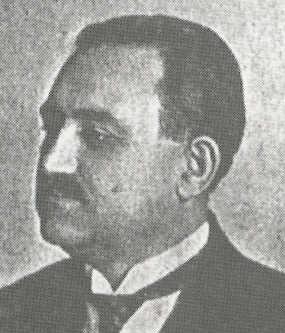 Mohammad Amin Rasulzadeh (1884-1955) was a leading proponent of changing the name of the Caucasian Khanates into the “Republic of Azarbaijan” on May 1918. He also became the president of that newly created republic. Under his political party (the “Musavats”) the notion of abosrbing the real historical Azarbaijan in Iran was officially proposed. The Soviets who then entered Baku in 1920, expanded on the former Musavat policies to give rise to the “Greater Azarbaijan” myth,
Mohammad Amin Rasulzadeh (1884-1955) was a leading proponent of changing the name of the Caucasian Khanates into the “Republic of Azarbaijan” on May 1918. He also became the president of that newly created republic. Under his political party (the “Musavats”) the notion of abosrbing the real historical Azarbaijan in Iran was officially proposed. The Soviets who then entered Baku in 1920, expanded on the former Musavat policies to give rise to the “Greater Azarbaijan” myth, 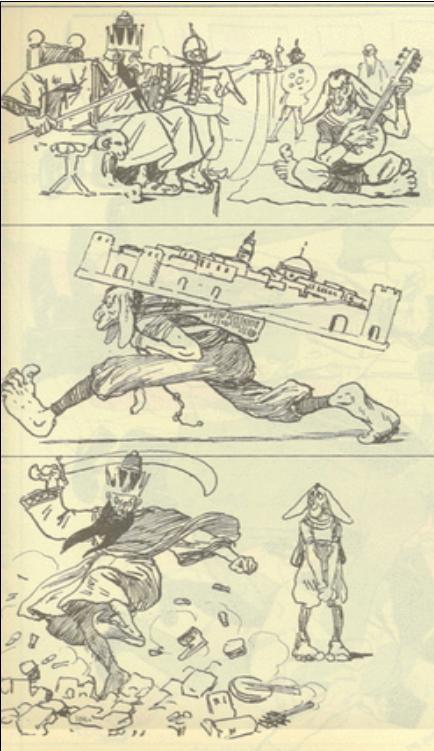 [Click to Enlarge] Cartoon of the Czarist-supervised Mulla Nassreddin Magazine which often published anti-oriental cartoons in the Caucasus, especially against Iran and Persian speakers. The above cartoon portrays Persian-speakers as donkeys with large feet, a visual way of portraying Persian-speakers as dumb and stupid. The Shahs of Iran are portrayed as cruel, and destructive despots. Picture source: Azer.com.
[Click to Enlarge] Cartoon of the Czarist-supervised Mulla Nassreddin Magazine which often published anti-oriental cartoons in the Caucasus, especially against Iran and Persian speakers. The above cartoon portrays Persian-speakers as donkeys with large feet, a visual way of portraying Persian-speakers as dumb and stupid. The Shahs of Iran are portrayed as cruel, and destructive despots. Picture source: Azer.com.

